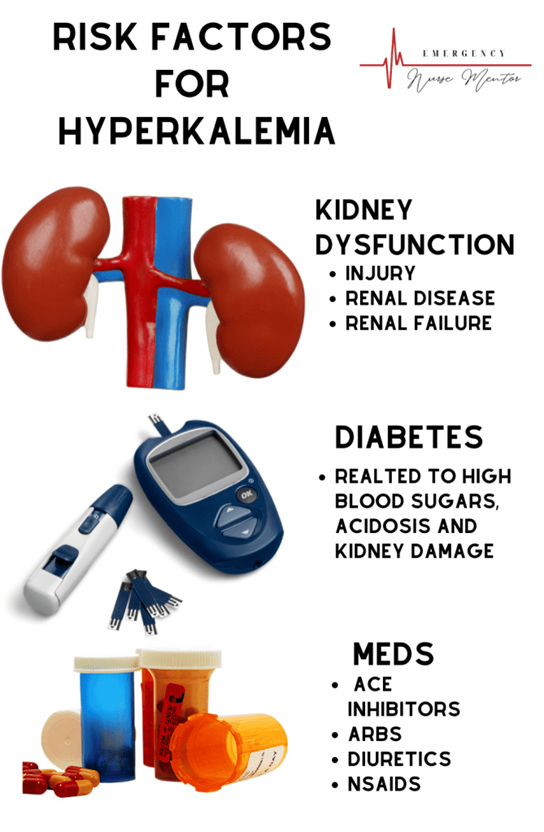A nurse is reviewing the laboratory test results from a client who has prerenal acute kidney injury (AKI). Which of the following electrolyte imbalances should the nurse expect?
Hypernatremia
Hypophosphatemia
Hypercalcemia
Hyperkalemia
The Correct Answer is D
Choice A reason: Hypernatremia, which is an abnormally high level of sodium in the blood, is not typically associated with prerenal AKI. Prerenal AKI is often related to hypovolemia, which can lead to hyponatremia rather than hypernatremia.
Choice B reason: Hypophosphatemia, or low levels of phosphate in the blood, is not a common finding in prerenal AKI. Phosphate levels are more often affected in intrinsic renal diseases or refeeding syndrome.
Choice C reason: Hypercalcemia, or high levels of calcium in the blood, is not commonly seen in prerenal AKI. It is more frequently associated with malignancies or hyperparathyroidism.
Choice D reason: Hyperkalemia, which is an elevated level of potassium in the blood, is a common electrolyte imbalance in prerenal AKI. This occurs due to decreased renal perfusion and the kidney's reduced ability to excrete potassium.

Nursing Test Bank
Naxlex Comprehensive Predictor Exams
Related Questions
Correct Answer is D
Explanation
Choice A reason: Blood-tinged dialysate outflow can occur initially due to the surgical procedure and is not typically a cause for immediate concern unless it persists or is accompanied by other symptoms.
Choice B reason: Dialysate leakage during inflow might indicate a problem with the catheter placement or integrity but is not usually an emergency. It should be monitored and reported if it continues.
Choice C reason: Discomfort during dialysate inflow is common, especially in new patients, as they adjust to the sensation of fluid being infused. It should be reported if the discomfort is severe or persistent.
Choice D reason: Purulent dialysate outflow indicates an infection, such as peritonitis, which is a serious complication
of peritoneal dialysis. This requires immediate atention and intervention by the healthcare provider.
Correct Answer is D
Explanation
Choice A reason: The nurse is not providing surgical site or wound care by documenting urination.
Choice B reason: Managing postoperative pain is not directly related to monitoring the client's ability to urinate.
Choice C reason: Assisting with early ambulation does not pertain to the urinary function directly.
Choice D reason: Monitoring urinary function is part of postoperative care, especially after removal of a Foley catheter, to ensure the client is able to void normally.
Whether you are a student looking to ace your exams or a practicing nurse seeking to enhance your expertise , our nursing education contents will empower you with the confidence and competence to make a difference in the lives of patients and become a respected leader in the healthcare field.
Visit Naxlex, invest in your future and unlock endless possibilities with our unparalleled nursing education contents today
Report Wrong Answer on the Current Question
Do you disagree with the answer? If yes, what is your expected answer? Explain.
Kindly be descriptive with the issue you are facing.
